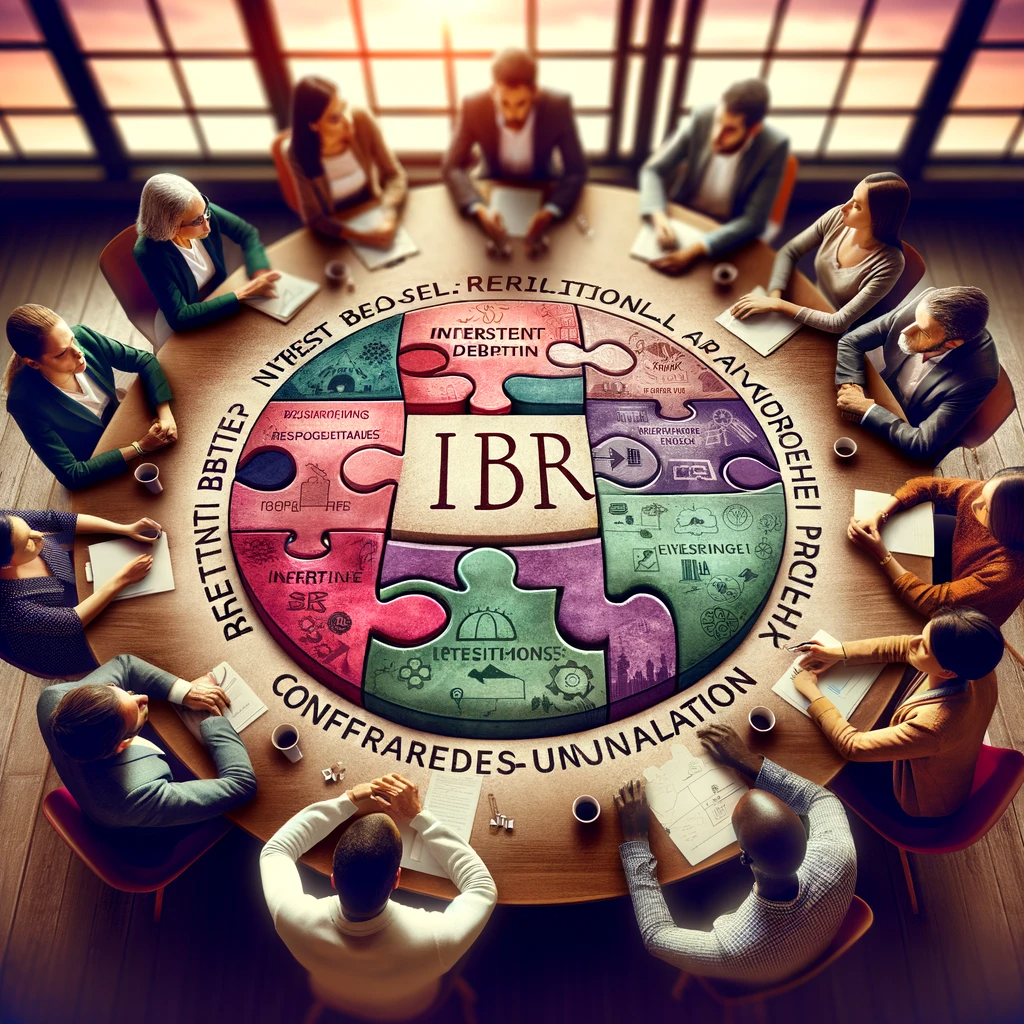How to Choose: Contrasting 3 Prominent Conflict Resolution Models
How to Choose: Contrasting 3 Prominent Conflict Resolution Models

Thomas-Kilmann Conflict Mode Instrument (TKI) vs Interest-Based Relational Approach (IBR) vs Conflict Resolution Model (CRM)
In the realm of conflict resolution, finding the right approach can be a daunting task. With countless models and strategies available, it’s crucial to identify the most effective ones that can bring about meaningful resolutions. In this comprehensive article, we will explore and compare three prominent methodologies: the Thomas-Kilmann Conflict Mode Instrument (TKI), the Interest-Based Relational Approach (IBR), and the Conflict Resolution Model (CRM). Our aim is to provide you with the insights and knowledge necessary to choose the most suitable approach for your conflict resolution needs.
Thomas-Kilmann Conflict Mode Instrument (TKI)
The Thomas-Kilmann Conflict Mode Instrument (TKI) is a widely recognized and extensively used measure of individuals’ preferred conflict-handling styles. It categorizes these styles into five modes: competing, collaborating, compromising, avoiding, and accommodating. The TKI assesses the degree of assertiveness and cooperativeness each style embodies, allowing individuals to gain self-awareness and effectively manage their responses during conflicts.

Competing: This mode denotes a high level of assertiveness coupled with low cooperativeness. It is often employed when quick decisions or actions are imperative, highlighting one’s willingness to achieve their own goals at the expense of others’ needs.
Collaborating: The collaborating mode emphasizes both assertiveness and cooperativeness, aiming for win-win solutions. It involves open communication, brainstorming, and the exploration of multiple perspectives to address the underlying concerns of all parties involved.
Compromising: When time constraints or an intermediate resolution are paramount, the compromising mode strikes a balance between assertiveness and cooperativeness. It requires concessions from all parties, enabling a mutually agreeable but not necessarily optimal outcome.
Avoiding: In certain situations, avoiding conflict becomes a viable approach. This mode emphasizes low assertiveness and low cooperativeness, effectively evading the conflict until a more opportune moment presents itself.
Accommodating: The accommodating mode is characterized by low assertiveness but high cooperativeness. It often involves self-sacrifice to appease others and maintain relationships. This approach may be appropriate when preserving harmony is crucial.
While the TKI provides valuable insights into individuals’ conflict response tendencies, it is important to note that each situation demands a unique approach. The effectiveness of the TKI lies in its ability to aid in self-reflection, helping individuals identify their preferred modes and adapt them to suit the circumstances at hand.
Interest-Based Relational Approach (IBR)
The Interest-Based Relational Approach (IBR) hinges on the understanding that conflicts often arise from unmet needs and diverging interests. Rather than focusing solely on positions and demands, the IBR encourages parties to delve deeper into their underlying concerns and engage in active listening, empathy, and relationship-building.

The IBR assists in uncovering common ground and identifying mutually beneficial solutions by employing a four-step process:
1. Identify Interests: This step encourages the parties involved to articulate their respective interests, aspirations, and concerns. It fosters a clearer understanding of what truly matters to each person or group, paving the way for effective problem-solving.
2. Generate Options: Once interests are known, the IBR facilitates the brainstorming of creative and innovative options that could satisfy the identified needs. This phase encourages open and inclusive thinking, exploring possibilities that go beyond the confines of previously stated positions.
3. Evaluate Options: After a range of potential solutions has been generated, thorough evaluation is essential. The IBR emphasizes objective analysis, considering the feasibility, desirability, and practicality of each option. By critically assessing the options, the parties can identify those that best meet their collective interests.
4. Decide and Act: In this final step, the IBR assists in making a collaborative decision that aligns with the overarching objectives and mutually beneficial outcomes. Implementing the chosen resolution effectively concludes the conflict resolution process.
The IBR offers a holistic and inclusive approach to conflict resolution, focusing not only on immediate results but also on building and maintaining positive relationships. By considering underlying interests and fostering effective communication, the IBR facilitates a cooperative atmosphere where conflicts can be overcome in a mutually beneficial manner.
Conflict Resolution Model (CRM)
The Conflict Resolution Model (CRM) is a structured and systematic approach that provides a roadmap for resolving conflicts effectively. It comprises seven essential steps, each contributing to the comprehensive management of conflicts:

1. Identify the Conflict: The first step is recognizing that a conflict exists and understanding its nature and underlying causes. Identifying the conflict accurately lays the foundation for subsequent stages.
2. Gather Information: In this stage, gathering relevant data and insights about the conflict becomes crucial. Collecting comprehensive information allows for a deeper understanding of key aspects and enables informed decision-making.
3. Analyze the Conflict: Once an ample amount of information is gathered, analyzing the conflict becomes essential. This involves identifying the factors contributing to the conflict, evaluating their impact, and examining potential implications on all parties involved.
4. Generate Possible Solutions: Using the insights gained from the analysis, the CRM encourages brainstorming and the generation of multiple potential solutions. Diverse perspectives and ideas play a significant role in finding innovative and effective resolutions.
5. Evaluate and Select: At this stage, the various solutions are evaluated against predetermined criteria such as feasibility, desirability, and long-term viability. By considering these factors, the most suitable solution is selected and chosen for implementation.
6. Implement the Solution: Implementing the chosen solution involves concrete action to address the conflict. It may include communication, negotiation, and collaborative efforts to ensure the resolution is executed effectively.
7. Review and Learn: The final step in the CRM is reviewing the implemented solution’s outcomes and reflecting on the conflict resolution process as a whole. This allows for continuous improvement and learning from experiences, promoting more effective conflict resolution in the future.
By following the structured steps of the CRM, conflicts can be effectively managed, ensuring the best possible outcome for all parties involved. The CRM serves as a foundation for approaching conflicts systematically, minimizing potential biases or oversights that may hinder resolutions.
Conclusion
In conclusion, the Thomas-Kilmann Conflict Mode Instrument (TKI), the Interest-Based Relational Approach (IBR), and the Conflict Resolution Model (CRM) all offer distinctive paths to resolving conflicts. While the TKI provides an understanding of personal conflict-handling styles, the IBR focuses on relational dynamics and shared interests. On the other hand, the CRM provides a systematic roadmap for conflict resolution.
Understanding the unique merits of each approach enables individuals and organizations to efficiently handle conflicts and cultivate cooperative environments. By employing the suitable methodology, disputes can be transformed into opportunities for growth, collaboration, and long-lasting resolutions.
Dr. Jerry D. Smith Jr. is a clinical psychologist and empathic expert specializing in human empowerment and leadership.
More from Dr. Jerry Don Smith Jr. and The Mediator’s Lens





